Ancient Ruins: Two-for-One
I avoid cliches like the plague, but let's face reality: no millennial can travel the world for a year without seeing some combination of Bagan, Angkor Wat, or Machu Picchu. I'm sorry to say that we missed Burma and Bagan, but we did manage to cross off the other two wonders from our bucket list. Accordingly, I've combined Angkor Wat and Machu Picchu into a two-for-one ancient ruins special.
Angkor
Despite its perennial appearance on my Instagram feed, I actually had no idea where Angkor Wat was before we visited it in October 2015. For the benefit of readers like me, allow me to provide some brief historical background on this popular destination.
Angkor and Angkor Wat both refer to the former capital city of an ancient civilization known as the Khmer Empire, which existed from about 800 AD to 1400 AD as the predecessor to Cambodia. The ancient city is found just north of modern-day Siem Reap, located in the northern half of Cambodia. As a reminder, Cambodia is part of Southeast Asia, geographically nestled between Thailand to the west, Vietnam to the east, and Laos to the north.
At its peak, the Khmer Empire enjoyed great wealth and power and―like many pre-industrial civilizations—they directed that wealth and power towards the construction of giant religious temples made out of stone. In this case, the temples were dedicated to Hinduism or Buddhism, depending on which religion was winning the tug-of-war at the time. The most famous temple―the one you always see on social media―is what is precisely referred to as Angkor Wat, but there are dozens of other temples in this small complex. In fact, more sites are being discovered and unearthed every year.
With that introduction aside, let's jump into our experience which started with none other than Angkor Wat itself.

This is it: the obligatory Angkor Wat sunrise
Looks so tranquil, right? Unfortunately, no.
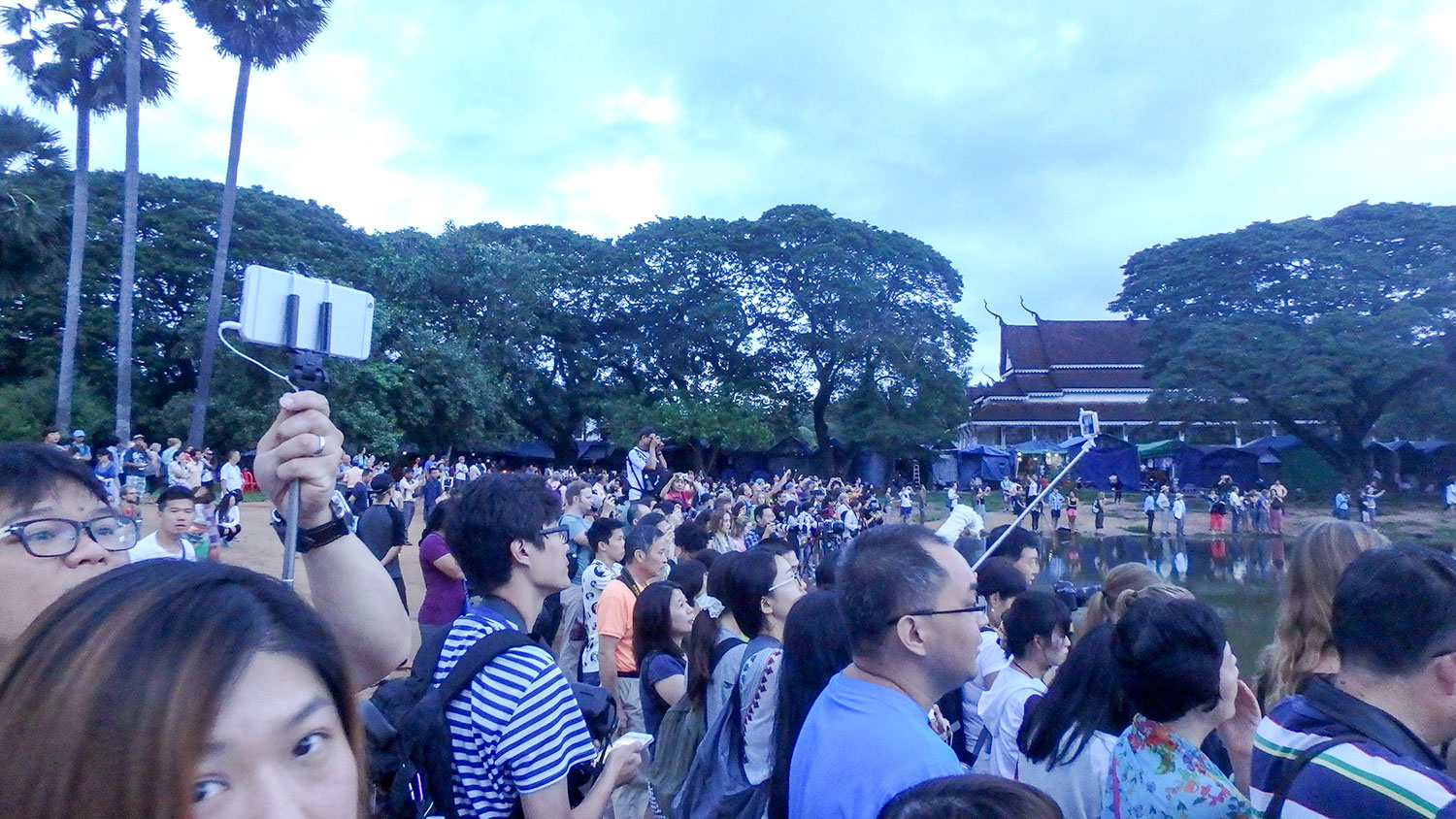
Behind us: death by a thousand selfie sticks
Overcrowding is a recurrent theme at these ancient wonders. If you're not ready for it, the horde can really kill your vibe. It is what it is; just be sure to manage your expectations. Here's Angkor Wat in the morning sunlight.
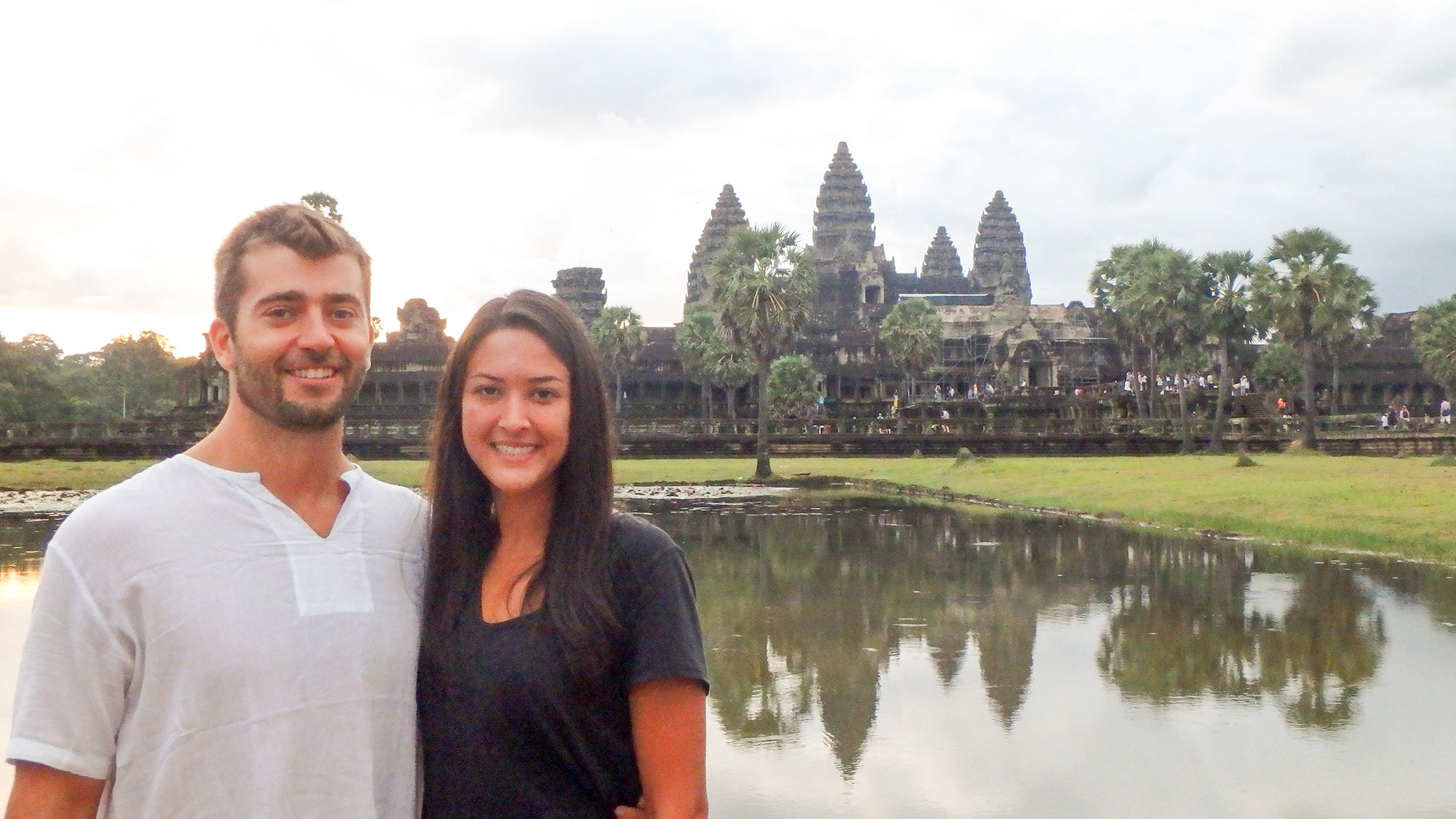
We hired a tour guide and driver for three days. That's right: we did nothing but tour ancient temples for three. whole. days. At one point I might have been able to tell you something about these temples―which emperor built it, when, was it Hindu or Buddhist, etc―but by the end everything blurred together.

The linen shirt and fisherman pants cost me $3 total in Thailand
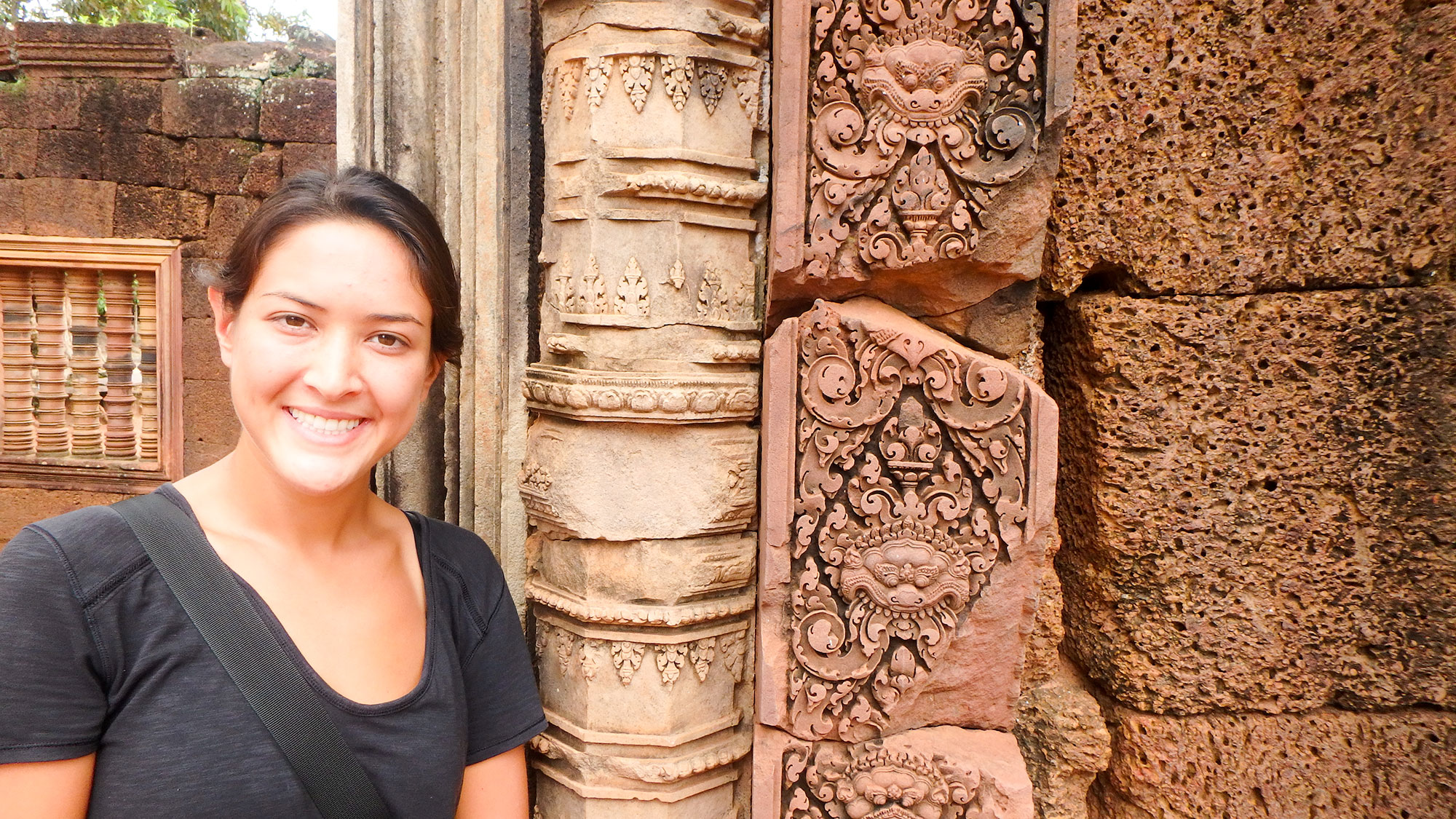
I remember this temple was considered a "female favorite" according to our guide because of its intricate carvings. I think this temple might even have been called the "Lady Temple" for that reason.

This photo was taken in the "Tomb Raider" temple where Angelina Jolie's action film was shot
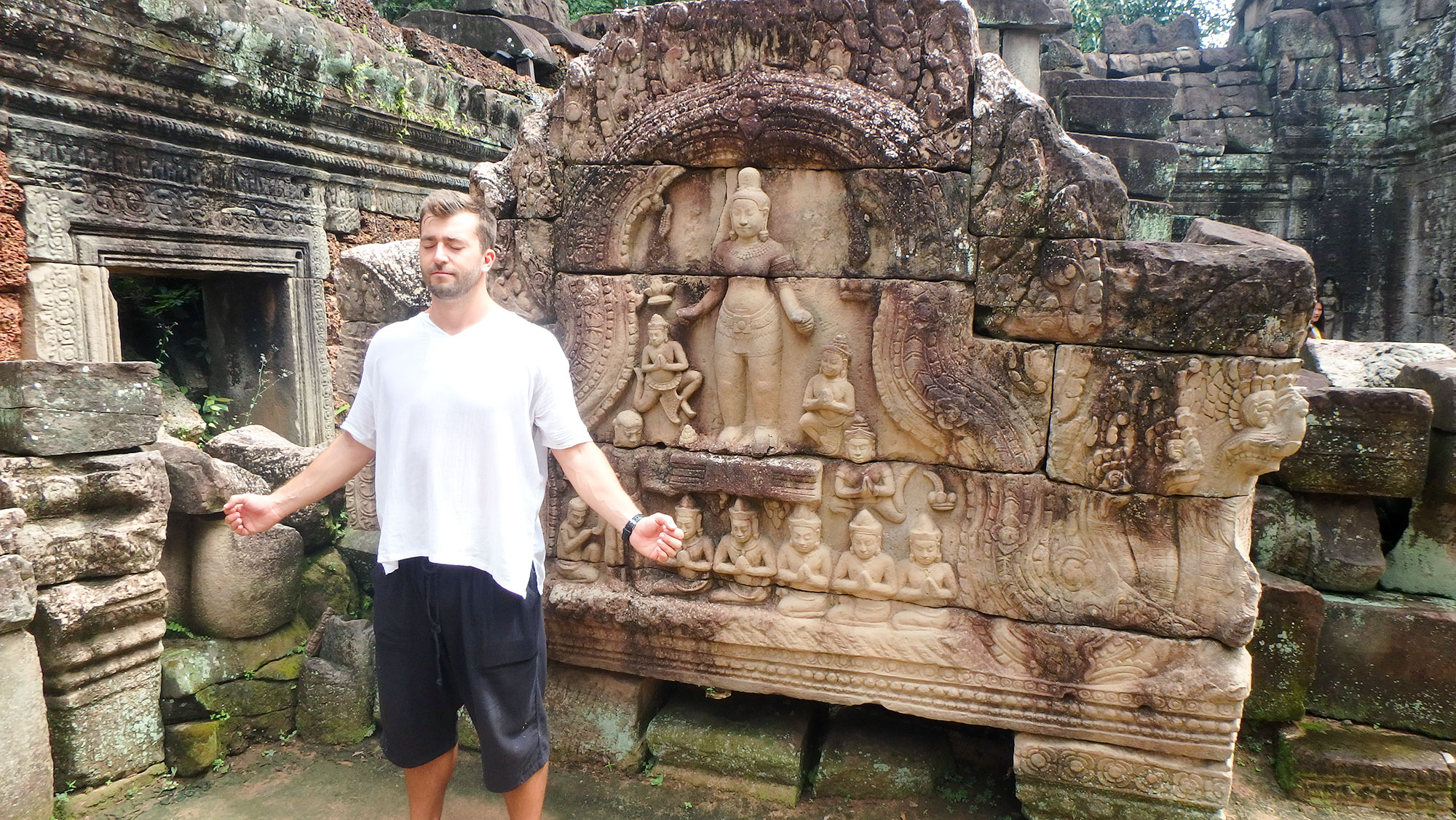
Channeling my meditation practice

My favorite temples were the deserted ones in the forest where we could explore in peace

Even Buddhist monks need to keep their IG game tight #nofilter (that's our tour guide Sam on the right)
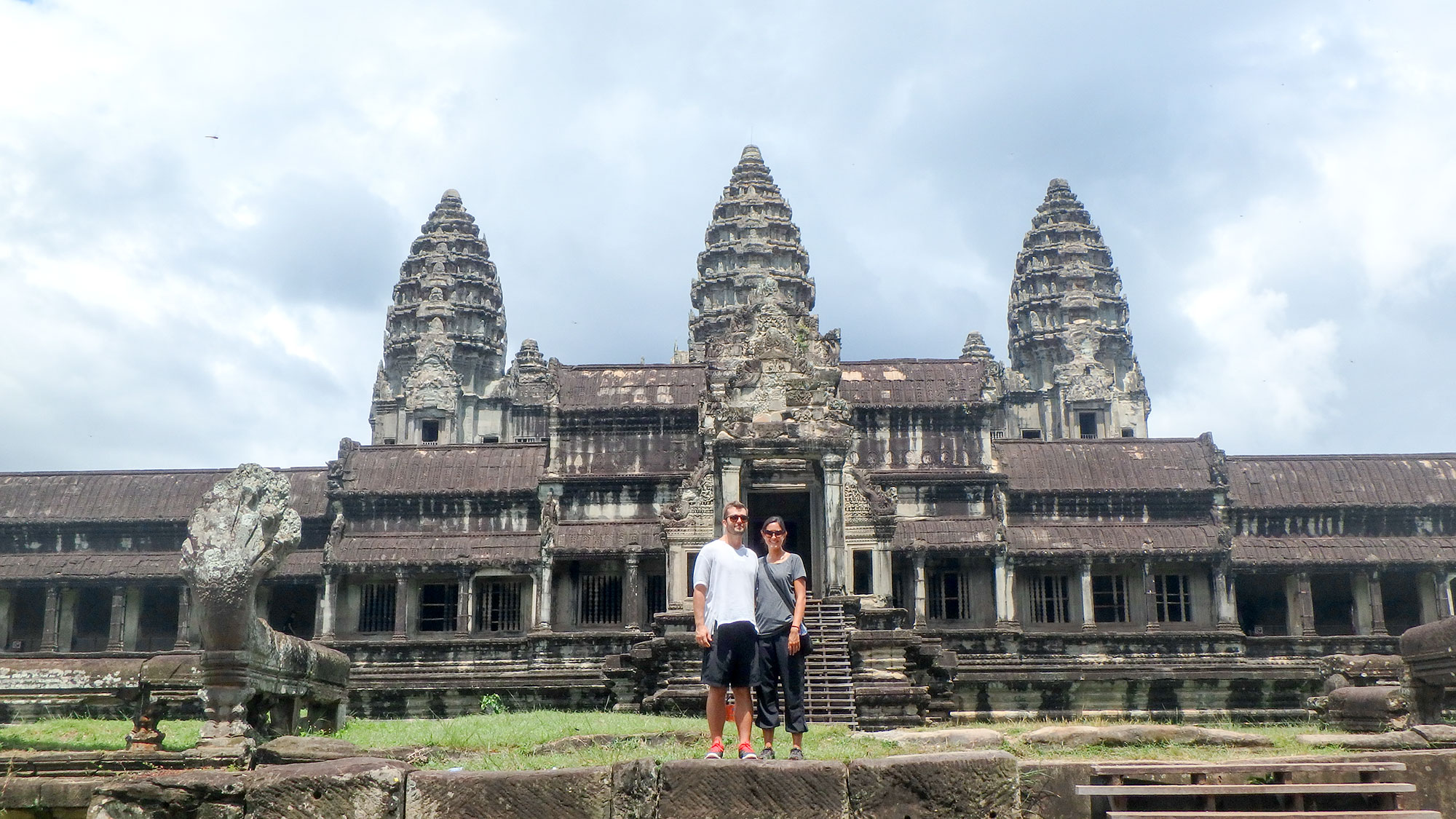
I'll conclude with another shot of Angkor Wat from the side entrance
We have literally a thousand other photos from Angkor, but I think you get the picture. If you want to see more, we'd be happy to schedule a slideshow.
Other than exploring the temples at Angkor, there wasn't much to do in Siem Reap. My fondest memory is a Mexican restaurant on Pub Street which served $0.50 beers, $1 frozen margaritas, and $2 tacos during happy hour (which runs from 10AM to 10PM). After running up a $30 check—which is a lot of beer and tacos at those prices—we'd go around the corner and get an hour long foot massage for $6.
Bonus Content: Cambodia
Before switching gears to Machu Picchu, I wanted to share a few observations on Cambodia―about how the place is super gritty and you can feel the aftereffects of the Khmer Rouge and Cambodian genocide. Then I decided that would be a real buzzkill.
Instead, here's a link to an article I wrote as a correspondent for glamping.com about an amazing destination in the eastern part of Cambodia called 4 Rivers Floating Lodge. This was one of the highlights of our Cambodian experience. If you're going to Phnom Penh and have a few extra days, I'd definitely recommend visiting 4 Rivers.
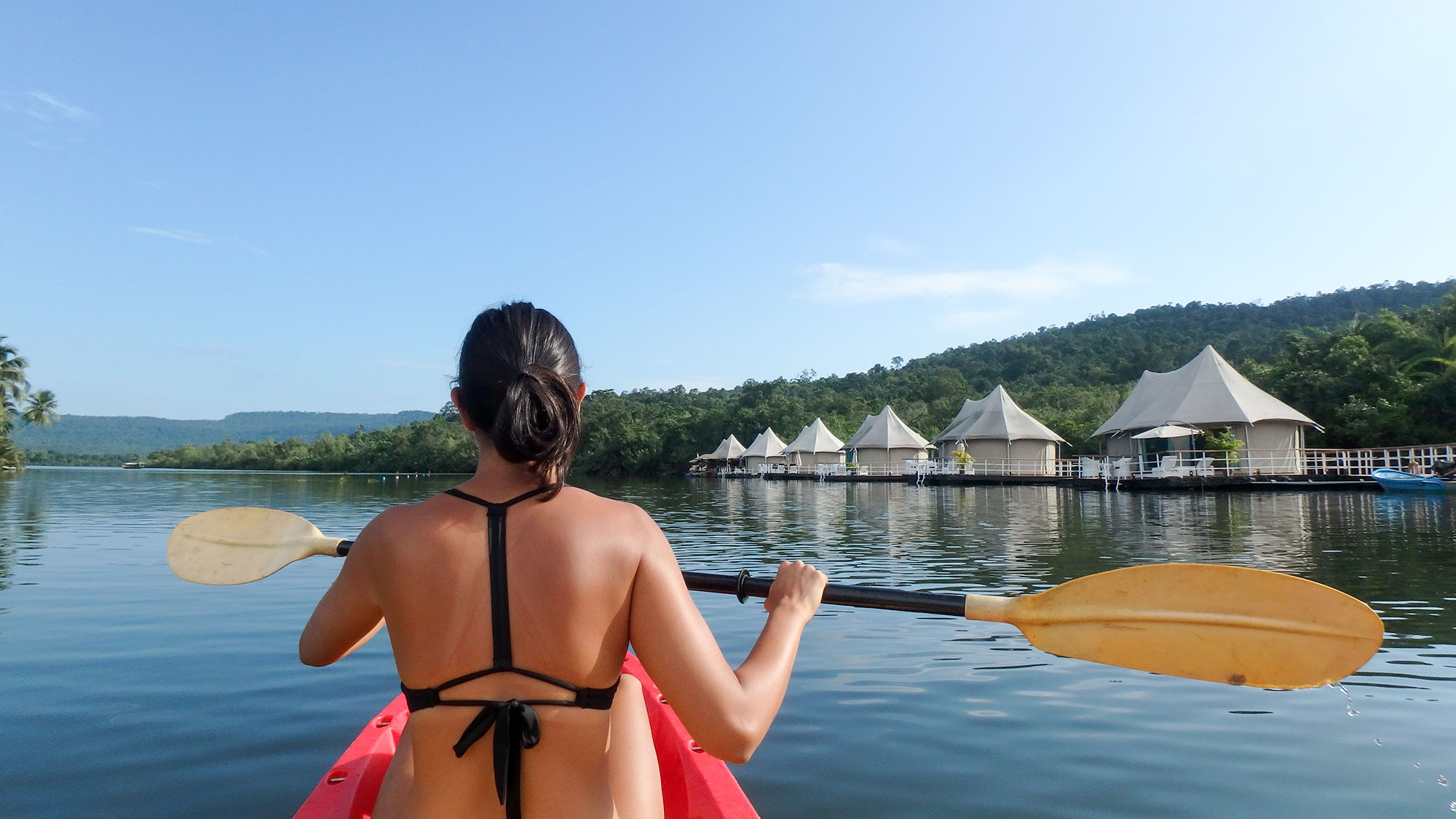
4 Rivers Floating Lodge
Machu Picchu
Like Angkor, I didn't know much about Machu Picchu prior to our adventure this past May, but at least I knew it was in Peru. Here's a quick background for the ignorami out there like myself.
Machu Picchu was built by the Inca Empire, which was the largest pre-Columbian empire at its peak, spanning the western side of South America. Although powerful, the dynasty was surprisingly short-lived: it only existed from the early 1400's until the mid-1500's, when it fell to the Spanish conquistador Francisco Pizarro and his 168 men.[^n]
The capital city of the Incan Empire was Cusco, which is an awesome little city in southern Peru that still exists today. Cusco is 75 kilometers southeast of Machu Picchu and anyone visiting the ancient wonder will inevitably begin there.
In fact, tour companies will insist that you spend several days in Cusco before trekking the Inca Trail because of the altitude. Cusco, Machu Picchu, and the Inca Trail are located high up in the Andes Mountains and many visitors suffer altitude sickness if not properly acclimatized. I'll talk more about altitude sickness later.
At this point, however, it's important to understand that there is a big difference between "going to Machu Picchu" and "trekking the Inca Trail to Machu Picchu."
You see, the reason Machu Picchu is so cool is because it's built 8,000 feet in the air on top of a mountain ridge. This means that there are only two ways to get there. First, you can take a train to the base of the mountain and then take a bus to the top with a bunch of tourists. Or, if you're more adventurous, you can "trek" 45 kilometers for several days along an ancient route called the Inca Trail and descend upon Machu Picchu by way of the Sun Gate, the same way the Incans used to do it.
For us, there was no contest.
Like everyone else, we started our Machu Picchu adventure acclimatizing in Cusco. We passed the time by sampling the many Peruvian culinary delights: alpaca, cuy (guinea pig), lomo saltado, coca tea, pisco sours, and so on. Seriously, Peruvian cuisine is incredible.[^n]
Also like everyone else, we (read: Meghan) were super excited to play with some of those zany alpacas we'd seen so much of on Youtube. Coincidentally, we weren't in Plaza de Armas for more than two minutes before Meghan was cajoled into posing for a photograph with this baby alpaca.

Cute right?
Look closer. You see that guy in the background laughing at us?
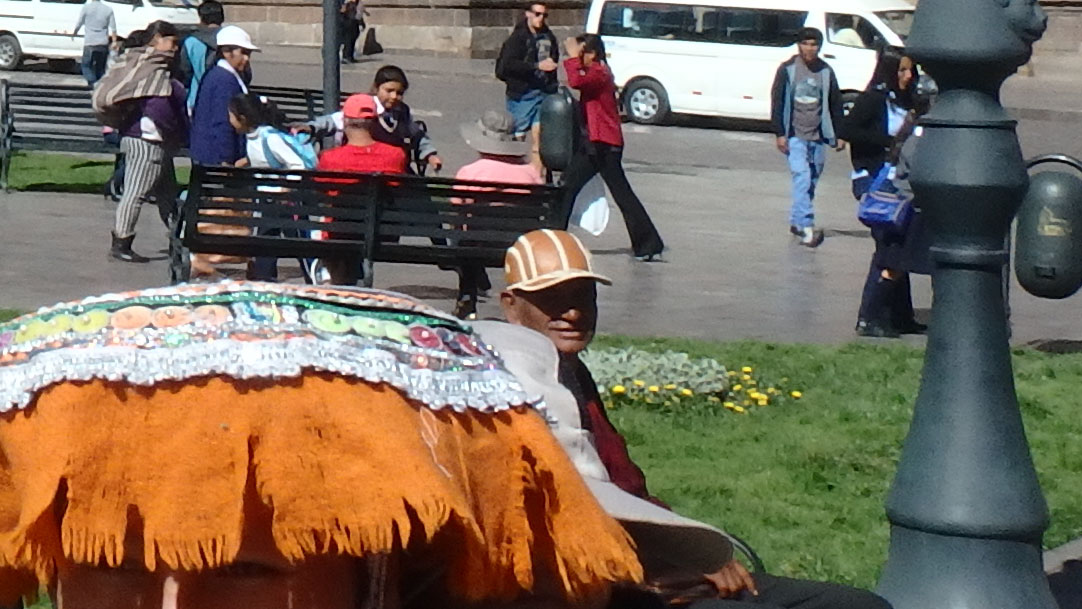
This guy
He's laughing because he knows what a baby alpaca looks like.

This is what a baby alpaca looks like
Meghan was posing with a baby goat! Those harmless looking women got us good, fleecing Meghan for over 30 soles ($10 USD)―the biggest con of our entire trip. It burns.
In fairness, we had just spent three months in Canada. Can you blame us for being a little soft?
Continuing on, a few years ago Peru decided to heavily regulate Machu Picchu and the Inca Trail, limiting the number of annual tourist permits and requiring that you trek with a licensed guide (in order to create jobs and protect the Trail). If you want to do the Inca Trail, you need to sign up several months in advance with a Peruvian tour operator. We chose Alpaca Expeditions using TripAdvisor which we can now wholeheartedly recommend to anyone interested in planning a trip.
Unless you're traveling in a large group or pay for a private tour, you'll trek with strangers. Our group contained ten people including us―a group of six Chicagoans and Michiganders our age and two older women from Los Angeles. We feel like we lucked out because we really enjoyed our company.
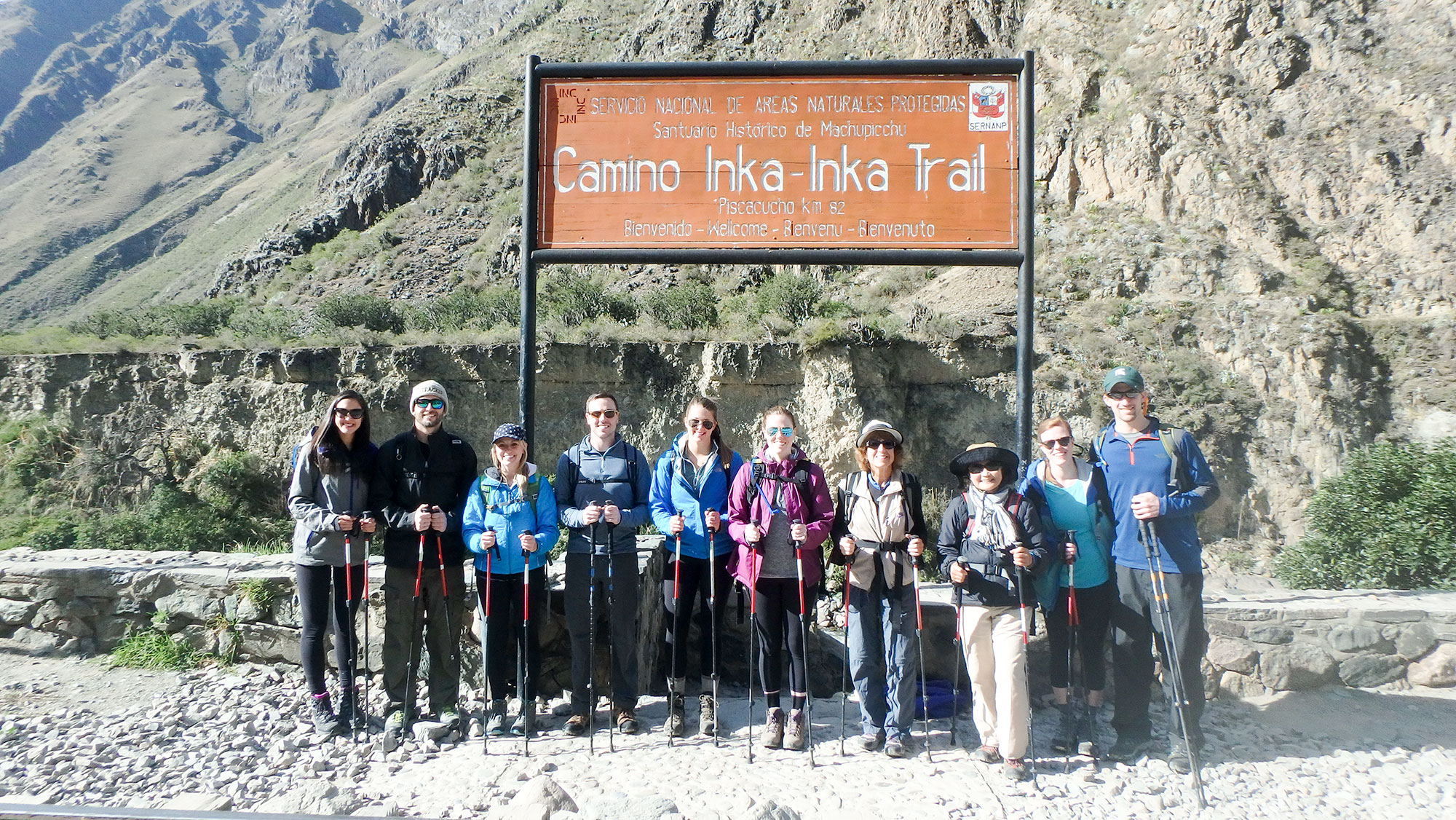
Start of the Camino Inka, the Inca Trail
Our trek was the 4-day, 3-night Classic Inca Trail. During the day, we would carry daypacks containing water, extra layers, et cetera. Porters provided by the tour company would carry everything else: up to 4 kilos of your personal stuff per person, all the gear (tents, sleeping mats and bags, cooking equipment, etc), and food. These guys are the Peruvian equivalent of Himalayan sherpas.
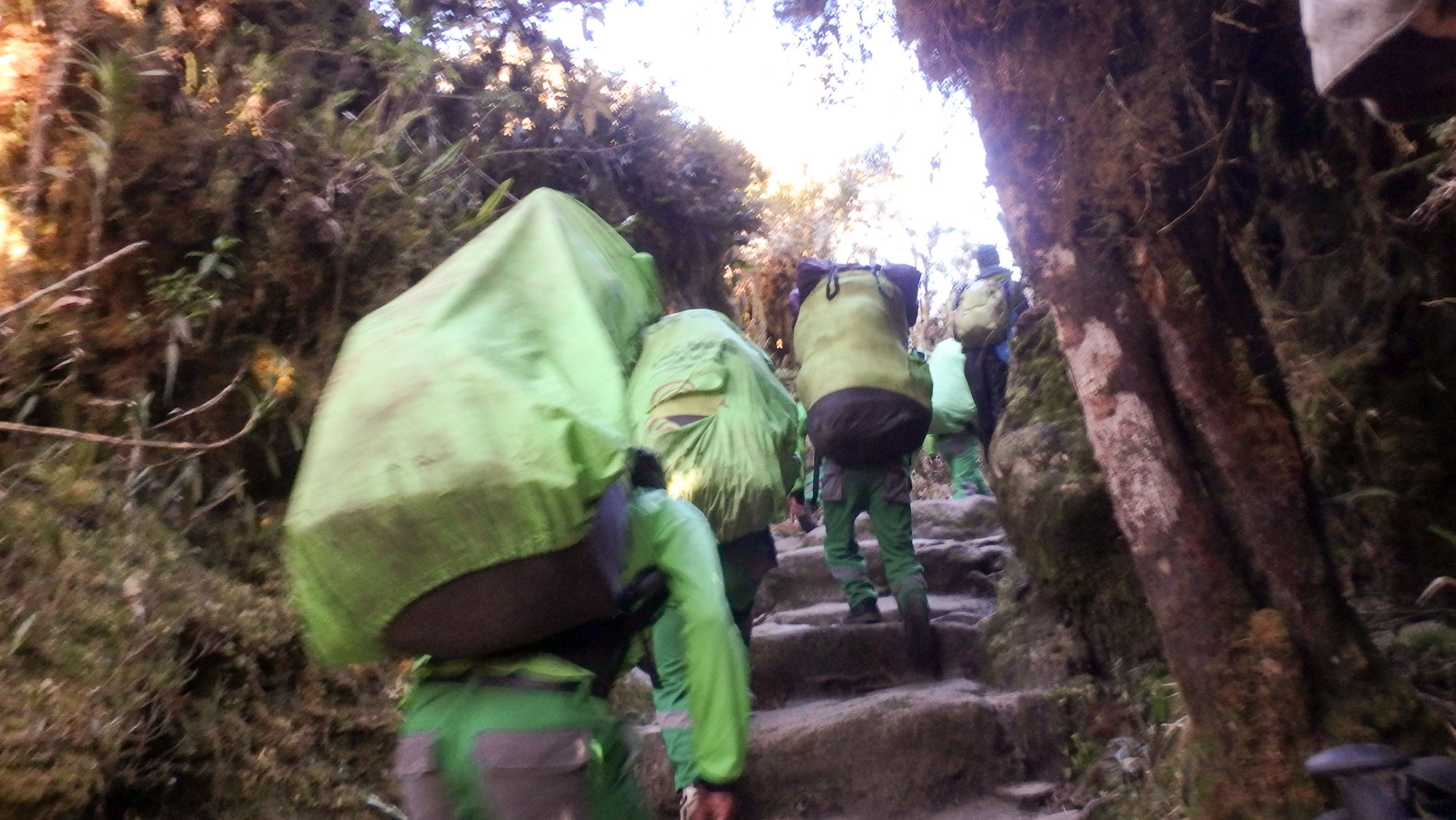
Our group had 15 porters hauling everything from site to site. Supposedly their packs are regulated to be no heavier than 50 pounds.
Each day we'd hike between 10 and 15 kilometers, stopping for lunch. The tour company cooked hearty meals served in a large mess tent erected at each site. They'd also set up our 2-person tents for sleeping.
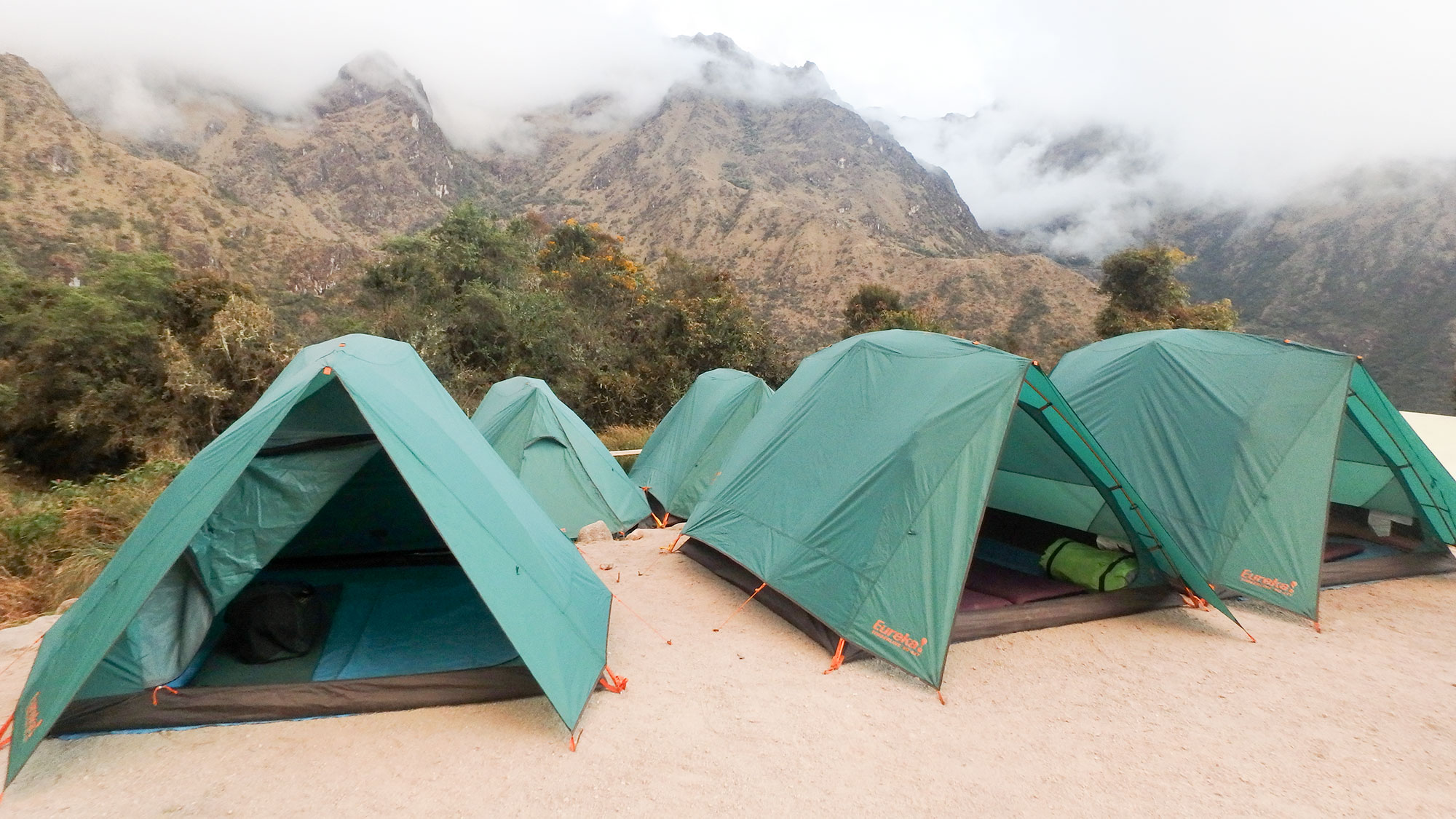
This is real glamping
Even with all that support, and despite the fact we were in good shape, we found the trek to be grueling. First, you're dealing with the physical challenge of hiking 10+ kilometers a day, often with a steep vertical component. Second, gringos like us are generally not well-adapted to the oxygen levels at these altitudes, which can introduce all kinds of complications. Third, you're dealing with the discomforts of camping such as no bathrooms, no showers, damp clothing, et cetera.[^n] Finally, you need to get moving at odd hours like 4:00 AM on the first day or 3:00 AM on the last day.
Those disclaimers aside, if you like a little challenge and adventure, the Inca Trail is definitely worth it.

This is the kind of scenery you see along the Inca Trail
Right before spotting this rainbow disaster struck: our camera broke. Here we were, busting our asses to one of the most photogenic places on earth, without a camera. Fortunately, we discovered that only the viewfinder LCD stopped working; the camera itself still took photos. Thus the remainder of our trek (and our sabbatical) became a photography experiment which I like to call "point-and-hope."
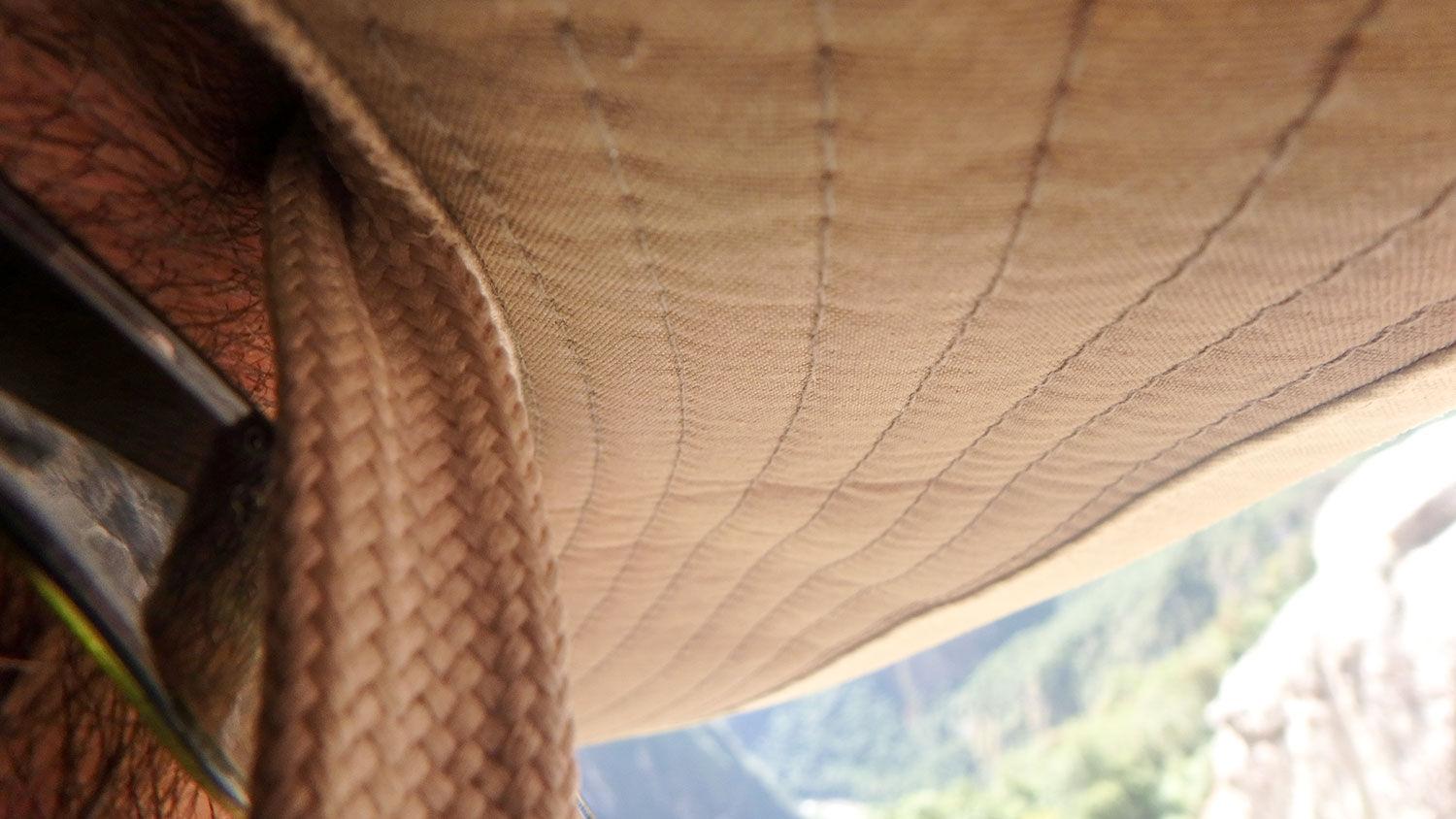
Is this thing on? Our photo collection is now cluttered with shots like these: me holding the camera to my ear to hear if the shutter is clicking.

This is a llama, not an alpaca

Here we are at Dead Woman's Pass, the highest part of the trek at 14,000 feet

The team at the top
A word on altitude sickness: it's real. Several members of our group suffered symptoms which really impacted their experience. Fortunately for us, Meghan and I were more or less spared. If you tell a doctor you're doing Machu Picchu, they'll prescribe you a medication called Diamox (acetazolamide). I'm not a doctor, but I personally think you're best bet is to properly acclimatize and avoid this drug. It's list of side effects is longer than those of altitude sickness itself! We went au naturel and were fine. Maybe better than fine: we were the only ones in the group without tingling extremities, which is one of Diamox's gentler side effects.[^n]
Speaking of altitude sickness, you see those lumps in our cheeks? Those are wads of coca leaves. Coca is ubiquitous throughout this region because the Andeans believe the plant contains significant medicinal benefits, particularly in alleviating altitude sickness. You either chew the leaves or put them in hot water to make a tea. Chewing doesn't have any noticeable effects unless you add a catalyst. This unlocks additional alkaloids that make your face go pleasurably numb. As gringos it's hard to come by, but we managed to talk our guide into giving us some.
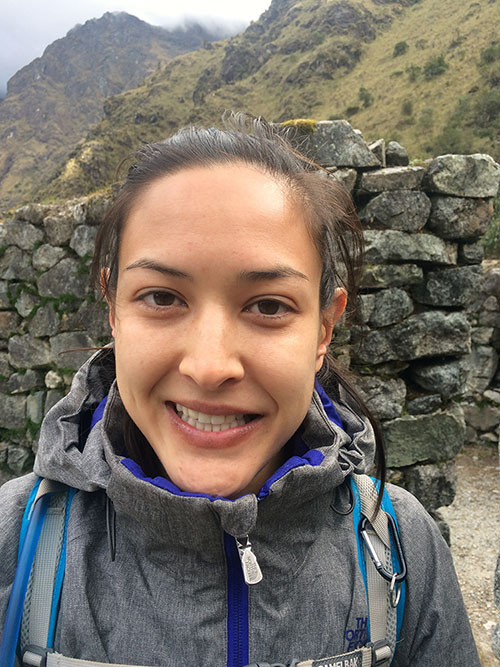
"I don't think it's working. I don't feel anything." -Meghan
The last day of the trek is when you finally arrive at Machu Picchu. You need to wake up at 3:00 AM and hike through the darkness, which is obviously a rough start to the day. We were told this is necessary in order to arrive at the Sun Gate overlooking Machu Picchu by sunrise. In reality, the tour operators have engaged in a "race to the bottom," starting earlier and earlier in an attempt to ensure that their groups arrive first. After waking up, you scramble for 15 minutes and then wait in line for several hours before you can start the hike up to the Sun Gate.
Fortunately for us, our early wake-up was not in vain. We did in fact make it to the the Sun Gate first, which enabled us to bask in glorious quietude for a few minutes before the masses caught up.

First to the top! Machu Picchu is over Meghan's shoulder.

We made it at last. (Now take me to a hotel.)
Machu Picchu is really cool. For my money, it's way more impressive than Angkor. Just look at this:
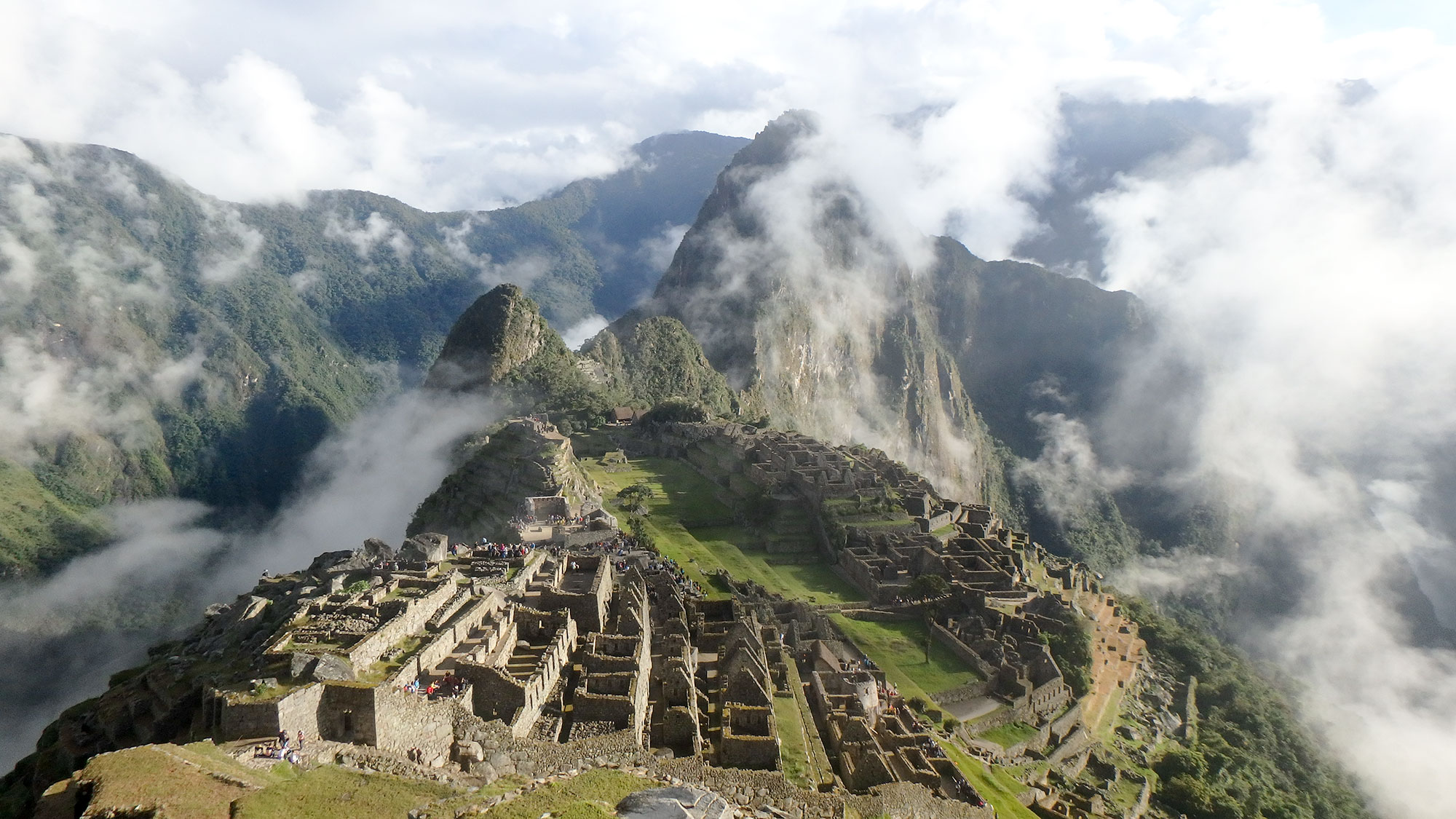
Breathtaking
If I'm being honest, however, the tour of Machu Picchu itself was kind of anti-climactic because the place was overrun by tourists. I hate to be a hater, but it felt like five Carnival cruise ships simultaneously dumped their passengers. Maybe I was just grumpy from the 3:00 AM wake up. Either way, gazing down upon Machu Picchu was better than walking through it.
All this being said, the Inca Trail was an awesome experience. If you can handle a little discomfort and challenge, I'd definitely recommend the trek, which is the adventurous way to do Machu Picchu.
Bonus Content: Andes
While it's certainly cool to experience the ancient ruins of once great civilizations, this year of travel and exploration has taught me that I find the handiwork of Mother Nature much more awe-inspiring. In this department, the Andes kick ass. After a taste of the Andes along the Inca Trail, we wanted more.
Fortunately, we received a great recommendation from one of Meghan's friends: the Llanganuco Mountain Lodge situated in the Cordillera Blanca range. We took an overnight bus from Lima north and spent a few nights trekking in comfort. Amazing place. Highly recommended. Here are some photos.

The lakes are naturally this color

The Cordillera Blanca is where Paramount Pictures gets its logo
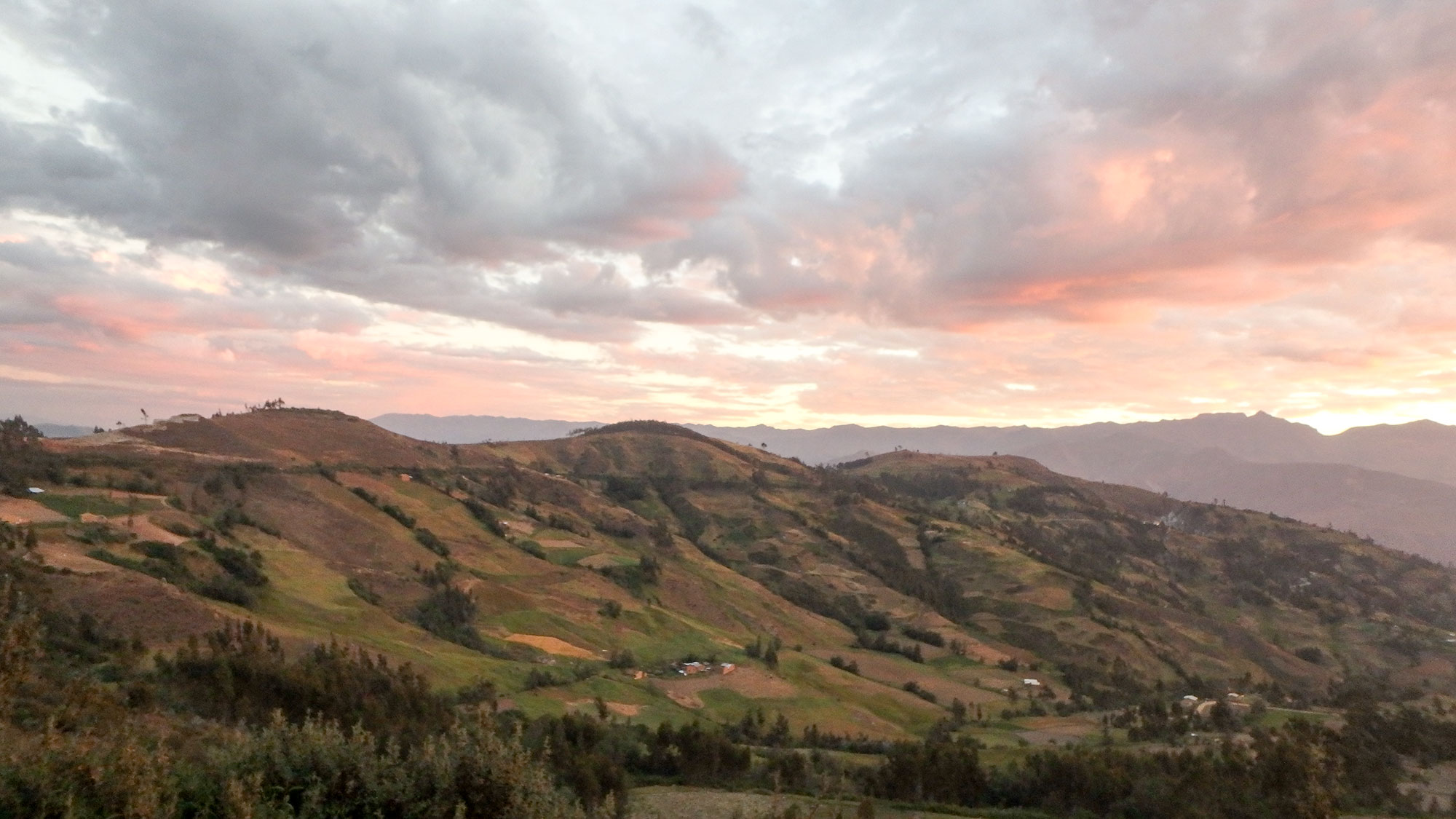
You get both incredible sunrises and sunsets
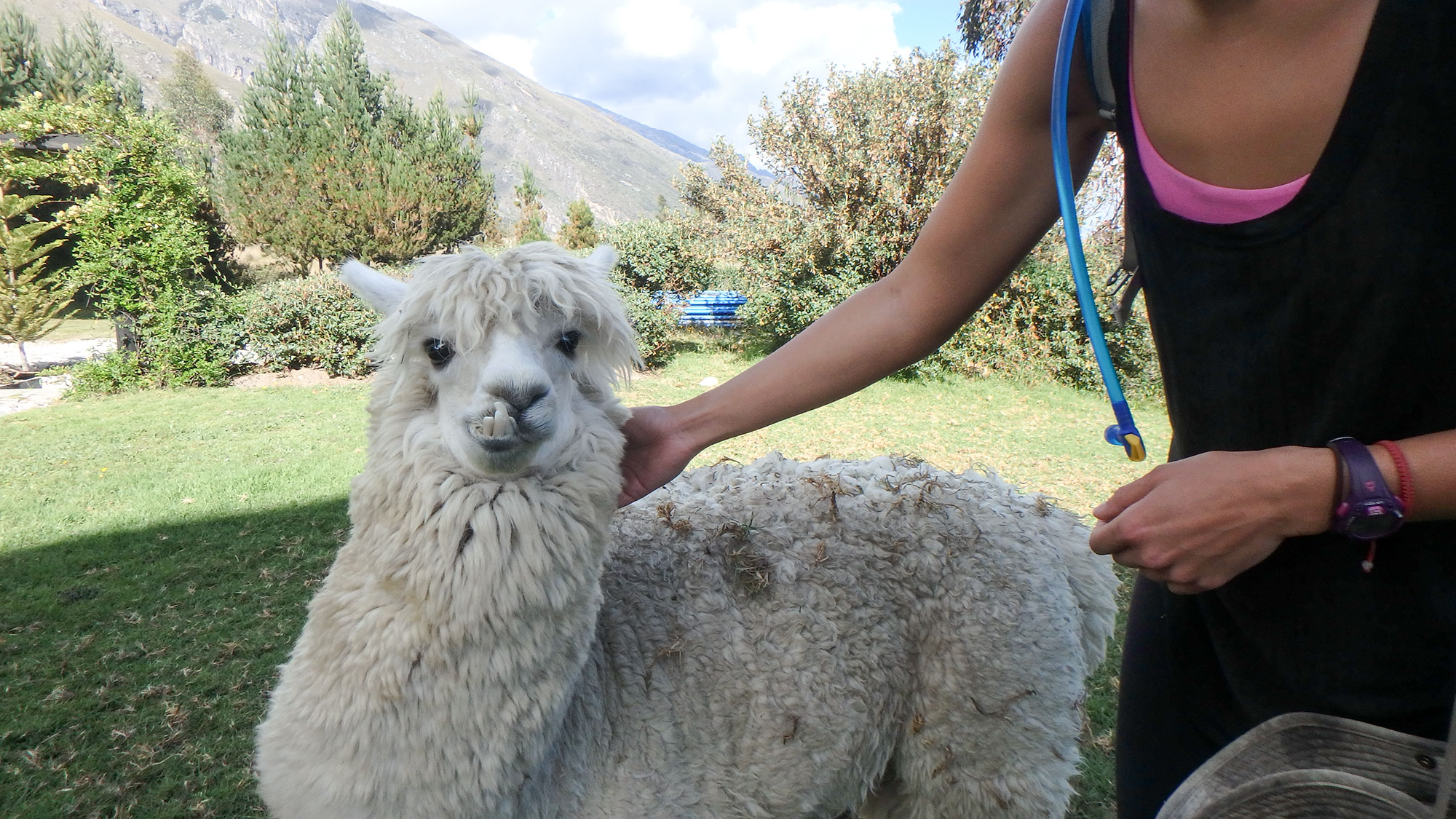
Meghan even made a zany llama friend!